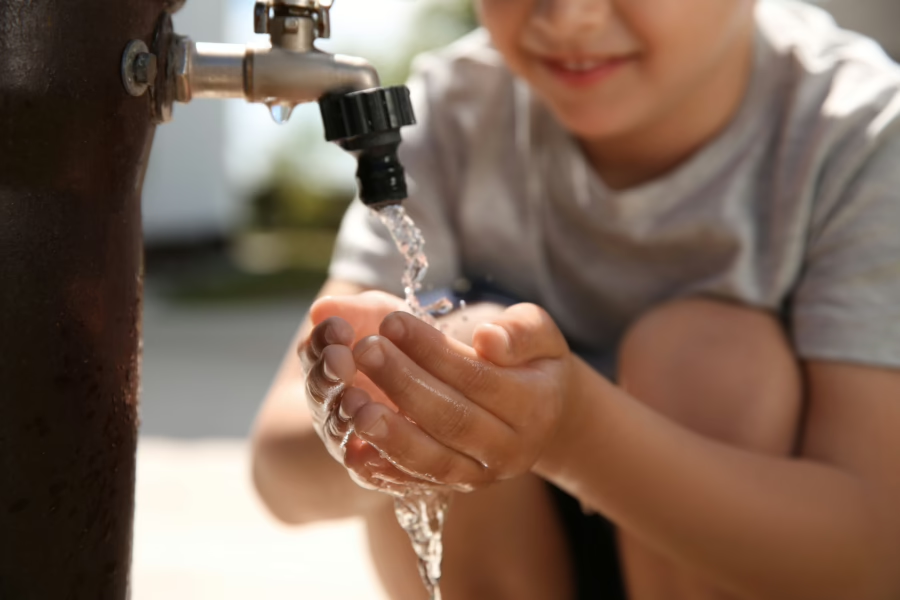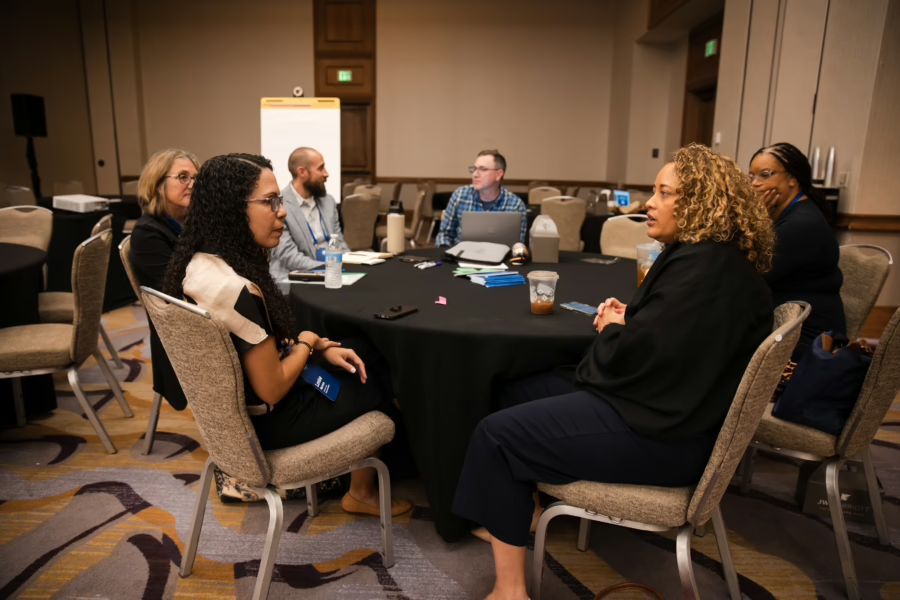Today, the US Water Alliance released The Power of Arts and Culture: One Water Partnerships for Change. This inspiring report showcases the transformative potential for arts to forge new community relationships and support greater innovation in the water sector.
An estimated 2,000,000 people in the US experience a lack of running water and basic sanitation. Challenges in the water sector—and across the nation—are growing and are exacerbated by climate change. Water is often one of the first places climate impacts are felt by the public, particularly for low-income and communities of color. With increasing water pressures on communities, tapping into innovation made possible through artists and culture bearers helps to create space for community engagement.
“Today’s water challenges require new ways of thinking,” says Mami Hara, CEO of the US Water Alliance. “To make progress on some of our most complex water challenges, we must think more creatively and engage with communities that have historically been excluded from conversations about planning and our collective future. Artistic thinking and creative strategies are vital to bringing a new process and way of thinking about issues like climate change and inclusion into a water provider’s work.”
The US Water Alliance recognizes that the greatest water challenges, from climate change to water access and equity, require innovative solutions and processes. Artists and culture bearers can help the water sector connect more authentically and equitably with their communities.
“Artists and culture bearers have unique methodologies and perspectives that can help utilities identify innovative and holistic solutions and meaningfully engage and mobilize communities around a shared vision,” says Benny Starr, US Water Alliance Senior Fellow, Arts and Culture.
Four utilities were selected for the Water, Arts, and Culture Accelerator: Central Arkansas Water, Madison Metropolitan Sewerage District, Philadelphia Water Department, and Tucson Water. Each water utility worked with local artists to create arts experiences unique to their community that expressed the value of water and solutions for water access.
- In Little Rock, Arkansas, Central Arkansas Water worked with local artists, including Tanya Hollifield, to activate over 70 local residents to share in the painting of a mural in downtown Little Rock. The mural depicts the importance of access to locally-sourced drinking water for Central Arkansas and included installation of a bottle filling station so unhoused community members and people walking by or waiting for the bus have 24/7 access to clean water.
- In Madison, Wisconsin, the Madison Metropolitan Sewerage District engaged the social justice and arts community to reimagine how a newly vacated building owned by MMSD could become an interactive space for communities and water professionals to problem solve together. nipinet landsem, a local tattoo artist, illustrator, and community educator was selected to bring the vision to life and serve as MMSD’s first Artist-in-Residence.
- In Philadelphia, Pennsylvania, the Philadelphia Water Department wanted to explore new ways of understanding and healing community trauma associated with urban flooding—specifically in Germantown, a predominantly Black neighborhood where the utility is working to improve infrastructure solutions. Trapeta B. Mayson, Philadelphia’s 2020 – 2021 Poet Laureate, served as the Artist-in-Residence, offering storytelling and poetry workshops as a mode of expression of water.
- In Tucson, Arizona, Tucson Water sought creative ways to rebuild trust in southern Tucson, an area historically fraught with pollution and chemical dumping. They partnered with Alexandra (Alex!) Jimenez, a Chicana multimedia artist rooted in the area. The team crowdsourced a compilation of experiences with “chubascos”—intense, highly-localized thunderstorms that pass over the Southwestern United States in the summer months. The Chubasco Channel allows people to listen to the monsoons during the dry months and will serve as a citizen-generated archive of the shifting monsoons.
“Through art, beauty, and celebrations of diversity and culture, this residency explores themes of water as a living part of the community and how diversity of experience informs each community member’s personal connection to the water they use every day. I hope to get people talking, and that the community and the District both feel more secure in the potential for an ongoing relationship after my residency is over,” says nipinet landsem.
The report, The Power of Arts and Culture: One Water Partnerships for Change, is the next installment of the US Water Alliance’s Arts and Culture Program and can be found on the Alliance website.
###
About the US Water Alliance
The US Water Alliance advances policies and programs to secure a sustainable water future for all. Established in 2008, the Alliance is a nonprofit organization that educates the nation on the true value of water and water equity, accelerates the adoption of One Water principles and solutions, and celebrates innovation in water management. The Alliance brings together diverse interests to identify and advance common-ground, achievable solutions to our nation’s most pressing water challenges. Our nearly 200 members and partners include community leaders, water providers, public officials, business leaders, environmental organizations, policy organizations, and more.
About the Arts and Culture Program
The US Water Alliance believes that arts and culture can help find enduring solutions for many of the pressing challenges facing the water sector. Our Arts and Culture program highlights how arts and cultural strategies can make water systems visible, engage and educate the public in new ways, and help us rethink how we plan and design water infrastructure projects.
About Participating Artists
Tanya Hollifield—Little Rock, Arkansas
Tanya is an artist working with drawing, painting, mixed media, and public art murals. She studied at the Arkansas Art Center, Arts Student League of New York City, and University of Arkansas.
Jenie Gao—Madison, Wisconsin
Jenie Gao is a contemporary artist specializing in public art, printmaking, social practice, and storytelling. Through her interdisciplinary work, Jenie advocates for fair pay and equity for artists, as well as building generative communities that work better for everyone.
nipinet landsem—Madison, Wisconsin
nipinet is a local tattoo artist, illustrator, storyteller, and community educator in Madison. A descendant of the Turtle Mountain Band of Chippewa, they bring a rich heritage to their work as an Indigequeer Anishinaabe and Michif artist.
Trapeta Mayson—Philadelphia, Pennsylvania
Trapeta is a poet and social worker, combining these perspectives in her work as a community-based teaching artist. She uses poetry to speak to the lived experience of everyday people, build community, promote healing, and create social change.
Alex! Jiminez—Tucson, Arizona
Alex! is a former scientist turned printmaker, illustrator, and graphic designer living in Tucson, AZ. Her heritage as a fourth generation Tucsonese grounds her work in the Sonoran Desert, and as a Chicana artist, she uses her Mexican heritage to explore issues of identity and culture in the Southwest.


